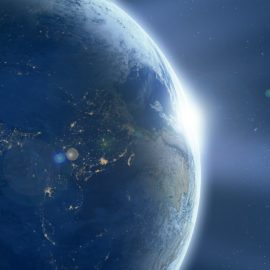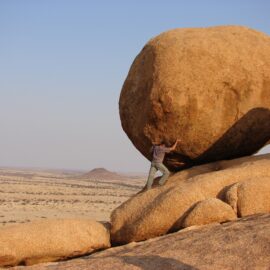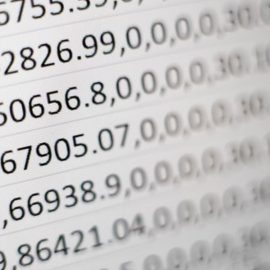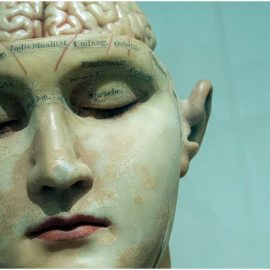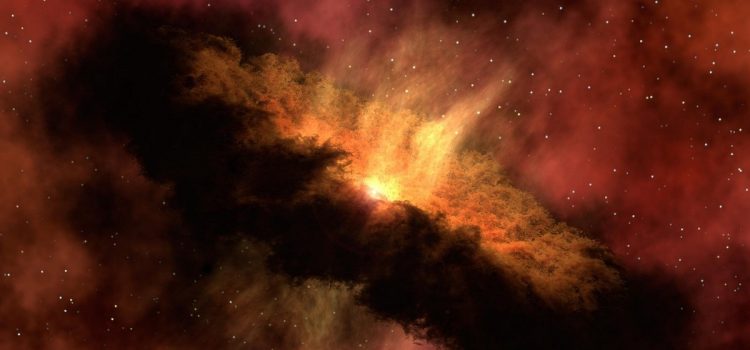
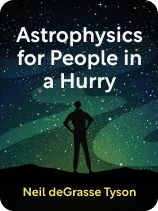
This article is an excerpt from the Shortform book guide to "Astrophysics for People in a Hurry" by Neil de Grasse Tyson. Shortform has the world's best summaries and analyses of books you should be reading.
Like this article? Sign up for a free trial here.
What does the Big Bang theory suggest? How could understanding it better help us unlock one of science’s greatest mysteries?
In his book Astrophysics for People in a Hurry, Neil deGrasse Tyson explains the Big Bang theory in terms that anyone can understand. He discusses what the theory tells us and what it might help us understand in the future.
Read more for the thoughts of Neil deGrasse Tyson on the Big Bang theory.
Neil deGrasse Tyson on the Big Bang Theory
By observing the sky in all available wavelengths, astronomers have worked for the last century to answer one of humanity’s most basic questions: “Where do we come from?” The branch of astrophysics that tackles this subject is the science of cosmology, the study of the origin of the universe itself.
Neil deGrasse Tyson, on the Big Bang theory, tells the story of the birth of the cosmos, from the origins of the basic physical forces, the creation of matter and the first rays of light, to the formation of the stars and all the chemical elements that make up the world we know.
| The Birth of the Big Bang Theory Our conception of the Big Bang Theory began in 1926 with astronomer Edwin Hubble, who was the first to observe that the other galaxies are receding away from our own. The prevailing scientific belief at the time was that the universe existed in a “steady state” without any significant change. Hubble’s observations, however, suggested that in the past the universe was smaller and denser than it is now. In 1931, Belgian astronomer and priest Georges Lemaȋtre proposed that the universe began as an infinitely dense “primordial atom” that rapidly expanded. The debate between Steady State and Big Bang proponents went on for decades, though the Big Bang model became widely accepted due to observations of the Cosmic Microwave Background. |
According to the Big Bang theory of cosmology, the universe began as a microscopic point that contained all the matter and energy that would ever exist, as well as all the fundamental forces, such as gravity, that would govern the universe’s development. From that one tiny dot, the universe expanded into the vastness of space that we currently see, 13 billion years later. We have no way to observe anything that came before the initial starting point, but Tyson says that scientists are actually comfortable admitting a certain degree of ignorance. After all, without ignorance, there’d be nothing to explore.
(Shortform note: The question of what took place before the Big Bang may in fact be meaningless. In Brief Answers to the Big Questions, Stephen Hawking explains that according to the theory of relativity, time itself started with the Big Bang. Relativity shows that time slows down in regions with extreme mass and gravity. Therefore, in the universe’s initial state as a point where mass and gravity were infinitely dense, time did not exist. In an appearance on Tyson’s podcast StarTalk, Hawking suggested that asking what happened before the Big Bang is like asking what’s south of the South Pole.)
Understanding the first few moments of the cosmos is crucial to unlocking one of the biggest riddles science faces. The chief problem in physics today is that we have two working models of how the universe functions that are incompatible with each other. Einstein’s theory of general relativity is great at describing the universe at the macro level, but it doesn’t work at the level of atoms and electrons. Quantum mechanics effectively describes the realm of the very small, but it in no way relates to how physical objects move and interact at the scale that we can see with our eyes.
(Shortform note: The quest for a unified theory that would reconcile relativity with quantum mechanics has been ongoing for a century. In A Brief History of Time, Stephen Hawking suggests that the most promising approach to the problem is string theory, which models all fundamental particles as one-dimensional, vibrating “strings.” The issue with string theory is that to date there’s been no direct way to test it, leading some to call it unscientific. However, theorists working on microscopic gravity are searching for ways to match string theory’s predictions with observable reality.)
The importance of the Big Bang in unraveling this mystery is that, in the universe’s first few instants, the realms of relativity and quantum mechanics overlapped. If we can discover how matter, energy, time, and space behaved during the initial moment of inception, Tyson argues that we should be able to resolve the discrepancies between the two theoretical systems. This is the research being done now at the Large Hadron Collider in Switzerland, where subatomic particles are smashed into each other at incredibly high pressure in order to simulate the conditions of the universe in its first few moments.
(Shortform note: When the Large Hadron Collider came online in 2008, some feared that replicating the conditions of the early universe might inadvertently create a dangerous black hole. Instead, the LHC has discovered a variety of subatomic particles that had only been hinted at in theory before, including the Higgs boson, the microscopic particle that gives other particles mass. Confirming the existence of the Higgs boson gives credence to our current understanding of particle physics. The Higgs boson is, in essence, the original form of matter in the universe that came into being at the moment of the Big Bang.)
The Forces of Nature
In order to unravel the riddles of the Big Bang, relativity, and quantum mechanics, we need to start with the fundamental forces that govern how matter and energy behave. As we currently understand them, there are four: Gravity is exerted by anything with mass. Electromagnetism governs the motion of particles with an electrical charge. The weak nuclear force holds protons and neutrons together in the nucleus of the atom, while the strong nuclear force glues quarks together (the subatomic particles that make up protons and neutrons).
According to Tyson, physicists believe that, in the universe’s primordial state, all four forces were combined into one. Gravity untangled from the others first, taking the form described by Einstein and Newton. As the universe expanded, the strong nuclear force split apart next, leaving a third force, dubbed “electroweak,” that quickly divided into the electromagnetic and weak nuclear forces. All of this we believe took place within the universe’s first trillionth of a second.
| The Standard Model The theory that matter is made of subatomic particles that interact via the forces above is referred to as the Standard Model. Astrophysicists often assume the Standard Model to be true while at the same time looking for data that will either confirm it or show that it needs revision. Particle physicists trying to reconcile relativity with quantum mechanics have often asked if the Standard Model’s four fundamental forces are really just aspects of the same basic force. The discovery of the electroweak force that encompasses two of the four is a step in that direction. However, further research has shown that there may be a fifth fundamental force, though the evidence is not yet conclusive. |

———End of Preview———
Like what you just read? Read the rest of the world's best book summary and analysis of Neil de Grasse Tyson's "Astrophysics for People in a Hurry" at Shortform.
Here's what you'll find in our full Astrophysics for People in a Hurry summary:
- Neil deGrasse Tyson's simple explanations of some of the mysteries of the cosmos
- Why everyone should understand where we fit in the universal scheme
- Why humans need to climb off their pedestals


